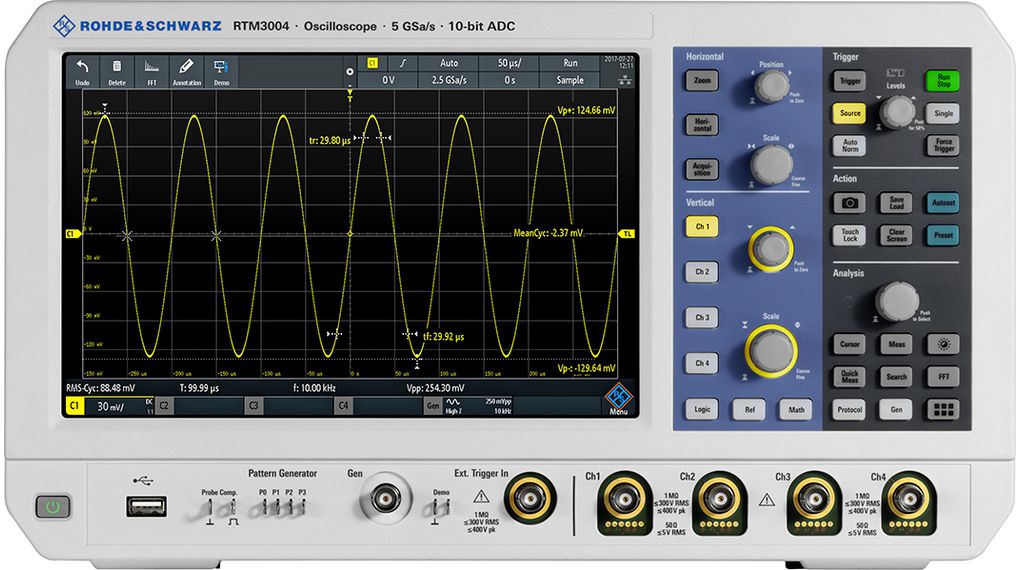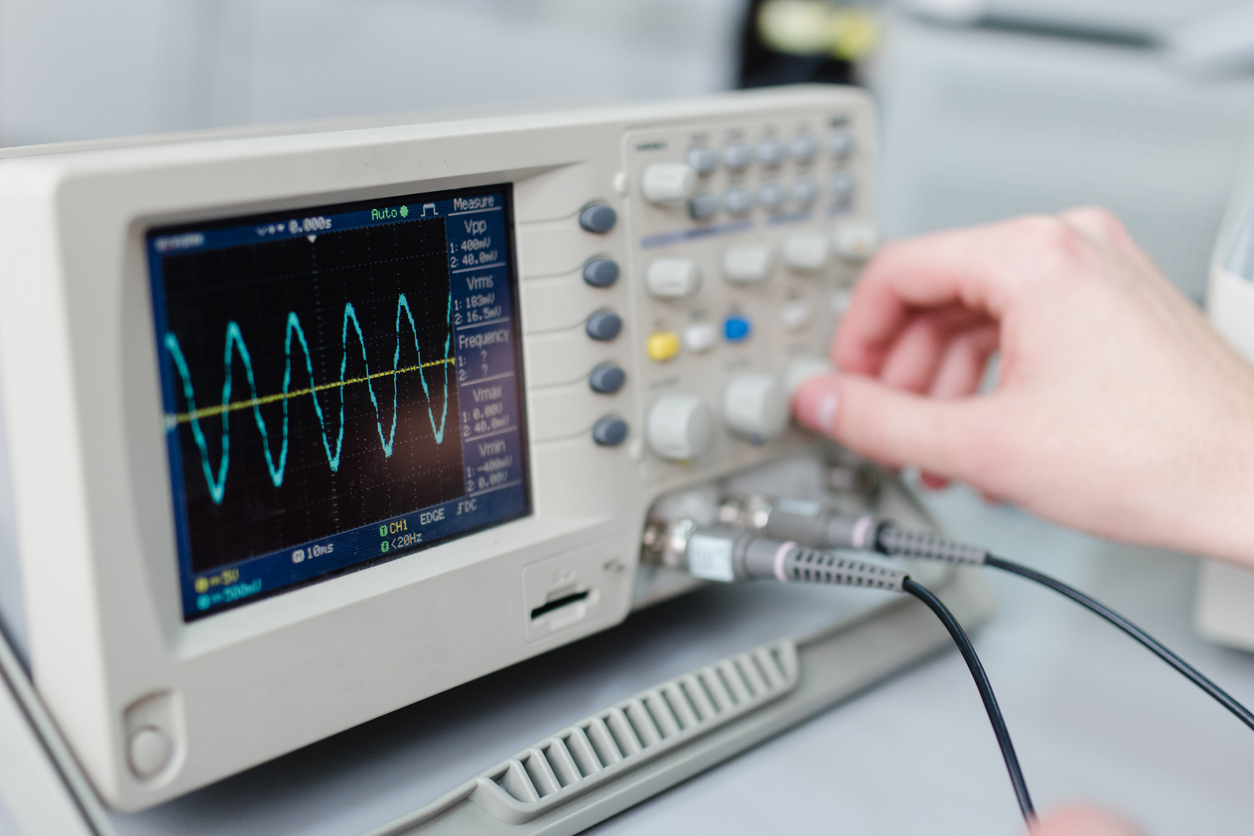With over 500 oscilloscopes available in our Distrelec online shop, finding the right one for your project can be overwhelming. This article is designed to guide you through the decision-making process, from selection to purchase.
Before buying an oscilloscope, especially if that is your first time, you might be wondering how an oscilloscope is used to measure frequency and voltage, how oscilloscope probes work and how it is used step by step.
If you are a first-time buyer, we recommend you read the overview of different types of oscilloscopes provided below before reading through the buyer’s guide.
If you are looking to replace your oscilloscope, or you already know exactly what you are looking for, you might want to jump straight ahead to our product recommendations.
With our guide, we will take you through different types of oscilloscopes so that you will know what oscilloscopes are used for and what is the best oscilloscope to buy.
Overview of different types of oscilloscopes

Digital Storage Oscilloscope (DSO)
A DSO is the most common type of oscilloscope. It has evolved from the analogue oscilloscope, and while it still looks exactly the same, it uses a completely different architecture. It transforms the analogue signal into a digital waveform. This is why criteria such as bandwidth, sampling rate and rise time become so important when selecting an oscilloscope.
See the outstanding features of this RND Touch Screen Digital Storage Oscilloscope.
RND Touch Screen DSO features:
- 100 MHz bandwidth, 1 GS/s sample rate
- 40 M record length 45000 wfms/s waveform refresh rate
- 8 inch 800 x 600 high resolution LCD, optional multi-touch screen
- Low background noise
- SCPI and LabVIEW supported
- Multimeter option
- Multi-trigger and bus decoding function
- Multi-interface integration – USB host, USB device, USB port for PictBridge, LAN, AUX, and VGA
Mixed Signal, Mixed Domain Oscilloscope (MSO/MDO)
An MSO combines the function of the DSO with a logic analyser. It usually has a combination of 2 to 4 analogue channels and more than 10 digital channels. An MDO can display signals in both the time and frequency domains. If you want to display digital waveforms, analogue synchronised waveforms or decoded serial protocols, you’ll need an MDO. Usually up to 15 channels are used for debugging.
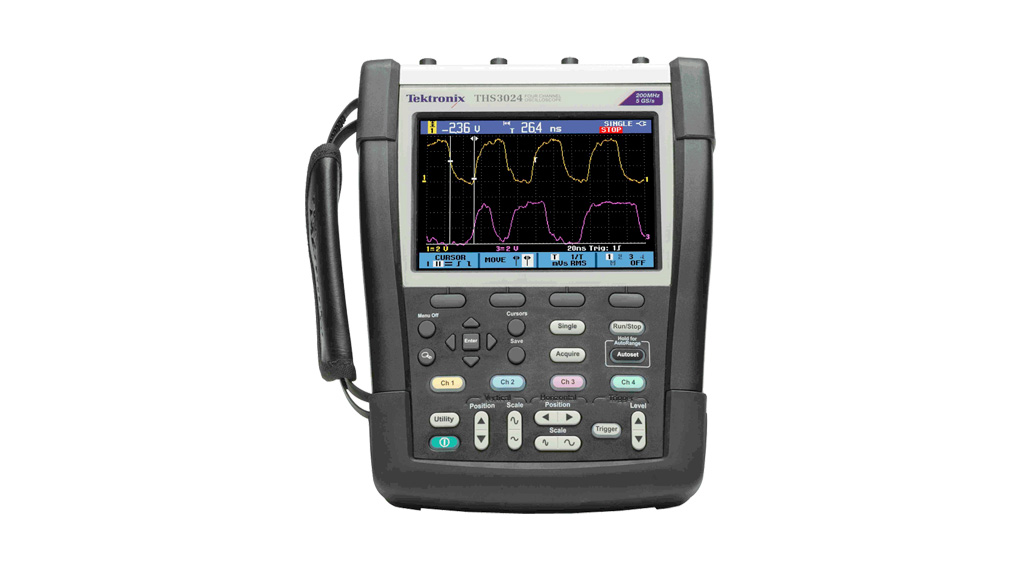
Handheld oscilloscope
Handheld oscilloscopes are useful when working in the field or with heavy machinery. You are not bound to your desktop but can take the oscilloscope with you to where the machinery is.
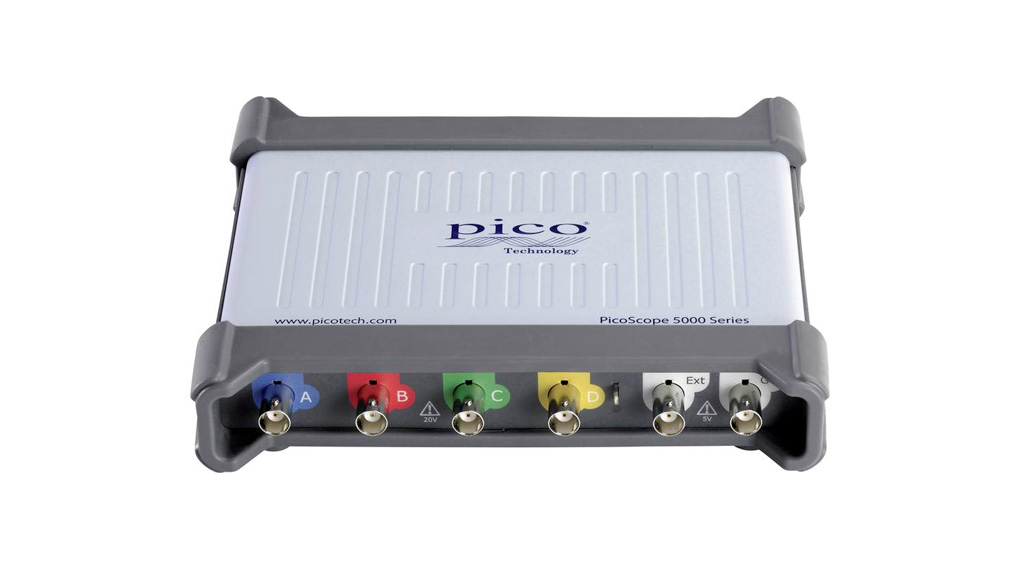
PC-based oscilloscope
PC-based oscilloscopes are connected to a computer or laptop. Storage capability is only limited by your computer’s storage space. The software usually comes with the oscilloscope, but it might also be capable to run other software. These high-performance devices often surpass the capabilities of a DSO; however, some people prefer to adjust parameters on a knob right next to the screen instead of entering them on their laptop.
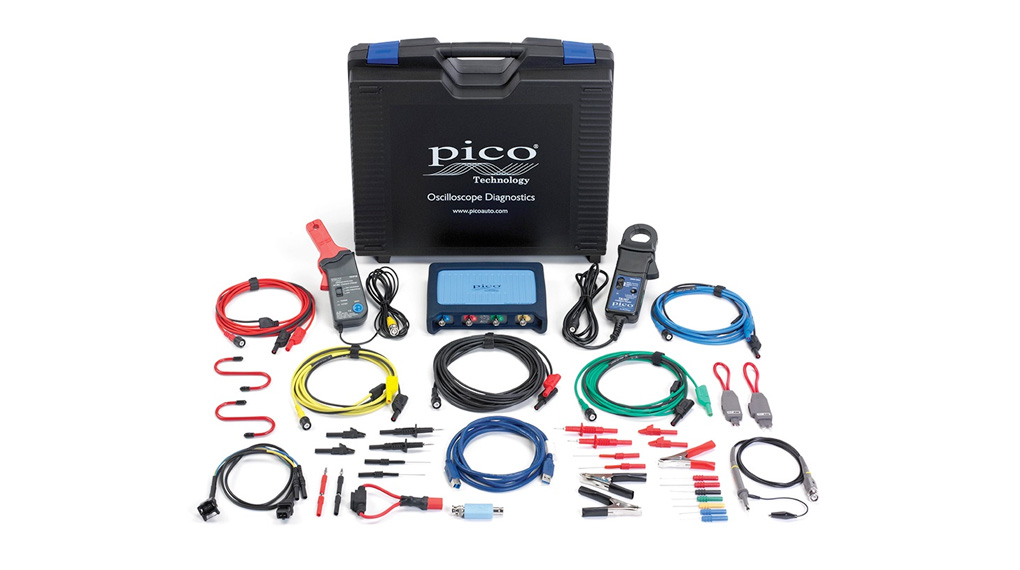
Automotive PC oscilloscope
Use an automotive PC oscilloscope to measure everything electronic within a vehicle. Often signals change too quickly to be measurable with a multimeter.
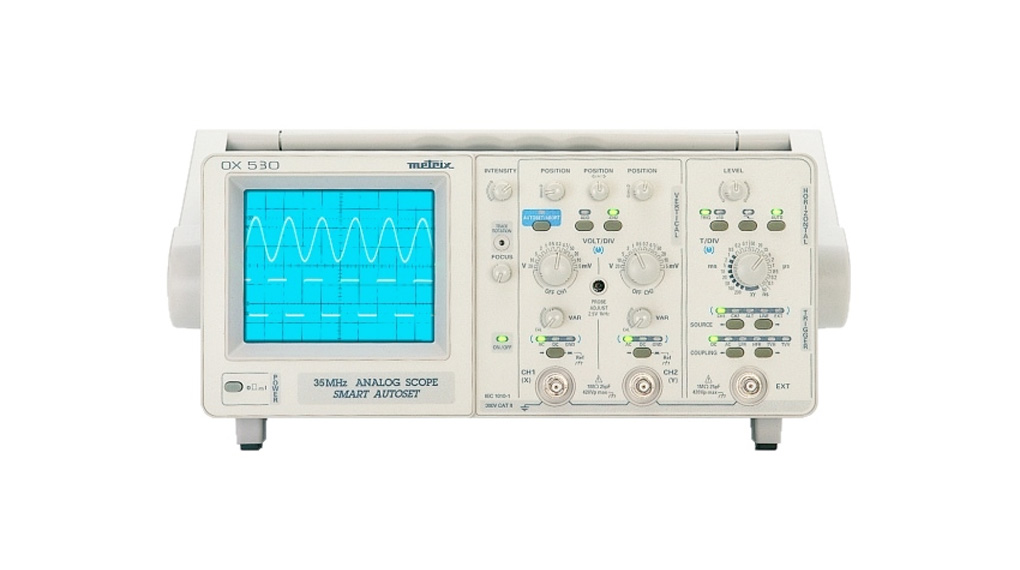
Analogue oscilloscope
The analogue oscilloscope follows the principle “What you see is what you get”. You don’t need to worry about your bandwidth and sampling rate. If you are using it for audio or video work, a good analogue oscilloscope will even be more accurate than a DSO of the same price range. Modulated signals will show up better on an analogue scope and digital signals perform well too. But, as soon as you are working in the realm of digital signals with high data rates, you get to the limitations of an analogue oscilloscope and want to look at a DSO.
Buying an oscilloscope in three simple steps
Buying an oscilloscope can be daunting. We suggest a simple three-step procedure to help you find the right one for the job. First, you define your use case and your specification. Second, you apply the 5× rule to limit the wide product range. Third, you compare the remaining products with the other criteria that you have listed in your use case and specification in step one.
1. Defining your use case
Think about what you would use your oscilloscope for and make a list with all the possible use cases. Think about where your projects are heading, and if you might have other use cases in the future.
Think about the following criteria:
- Are you using it in one location? Or would it be useful to carry it around with ease?
- How many input channels do you need? With 2-4 channels, you can view and compare signal timings of waveforms. However, to debug a digital system you will need 8-16 channels.
- What record lengths do you need? A stable sine-wave signal only needs about 500 points and a basic oscilloscope will store around 2,000 points. But, to troubleshoot timing anomalies in a complex data stream, you might need a record length of 1 million points.
- What navigation and analysis tools do you want to have? Zoom and pan, play and pause, marking and simple or advanced search functions are just a few possible features.
- What automated waveform measurements do you use?
- Do you want to be able to connect it to a computer? Do you need networking, printing and file-sharing abilities? Does it have to be able to run third-party analysis software? Is internet access required?
Try to find answers to these questions:
- Do you know the maximum signal bandwidth of the device that you are going to use it with?
- What is the rise time of your device?
- What is your circuit’s highest frequency component? This helps you to define your sample rate. The faster you sample, the less information you will lose and the better the oscilloscope will represent the signal under test. However, the faster you sample, the faster you will fill up your memory, which limits the time you can capture.
- What are the probes’ bandwidths?
Once you have a good idea of what you are looking for, it will be much easier to find your oscilloscope.
2. Applying the 5× rule
The 5× rule is a rule of thumb to define the required bandwidth, rise time and sample rate. Depending on your use case, you might need other values.
- Bandwidth: The bandwidth of the scope together with the probe should be at least 5× higher than the maximum signal bandwidth to get a performance of better or equal to +/- 2% measurement error.
- Rise time: For the rise time, follow this formula: rise time < 1/5× fastest rise time of your signal. The faster the rise time, the more accurate your results will be.
- Sample rate: Your sample rate should be at least 5× higher than the highest frequency in your circuit. The faster you sample, the less information you lose. If you want to look at slowly changing signals over longer periods of time, a low sample rate will be sufficient. The faster you sample, the faster it will fill up your memory and limit the time you can capture.
Filter the established criteria on Distrelec website or go straight to the RND Lab. You will now have a handful of products that you should compare.
3. Considering other criteria
Have a closer look at the remaining criteria you have listed in step one. Try to prioritise these as you consider your options. Carefully read the specifications of your favourite products to get a picture of the overall performance (e.g. if the sampling system between channels is shared, the number of channels turned on will reduce the sampling rate).
Don’t forget to double-check that the scope can be operated in your language, and make sure you feel comfortable with its user interface and its user manual.
Product recommendations
Touch Screen Oscilloscope with Multimeter Option
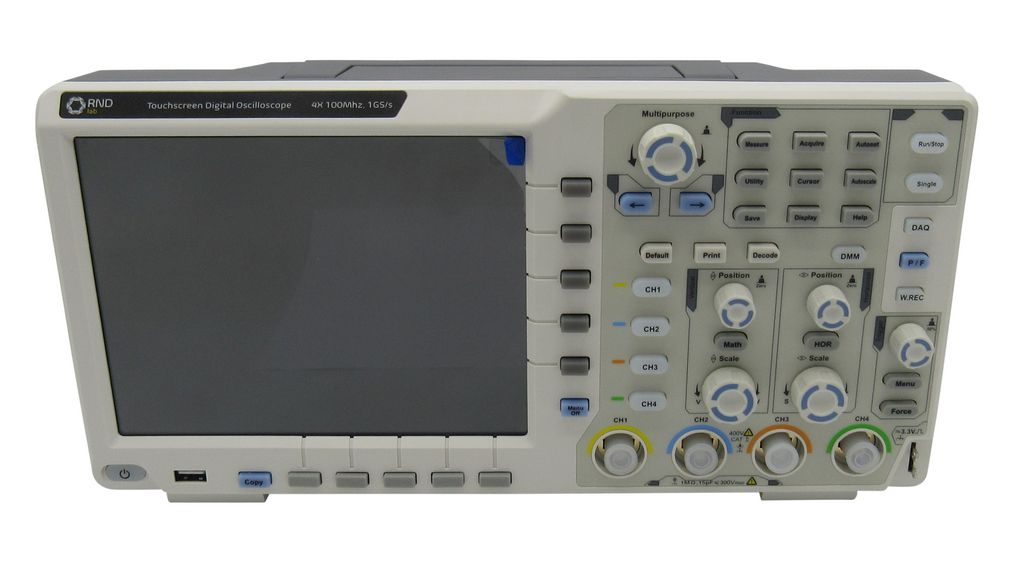
Tektronix TBS2074
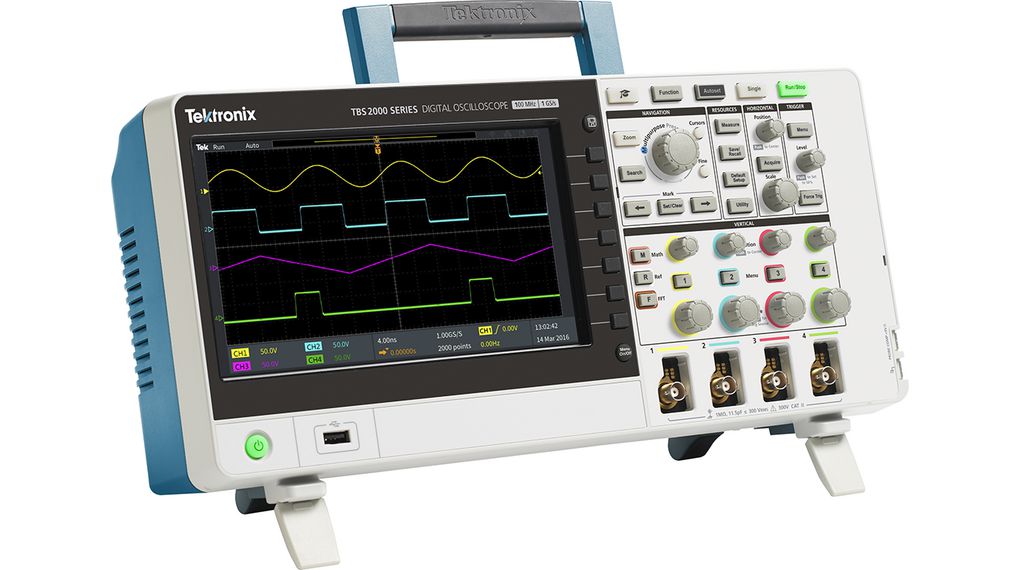
PicoScope 5444D
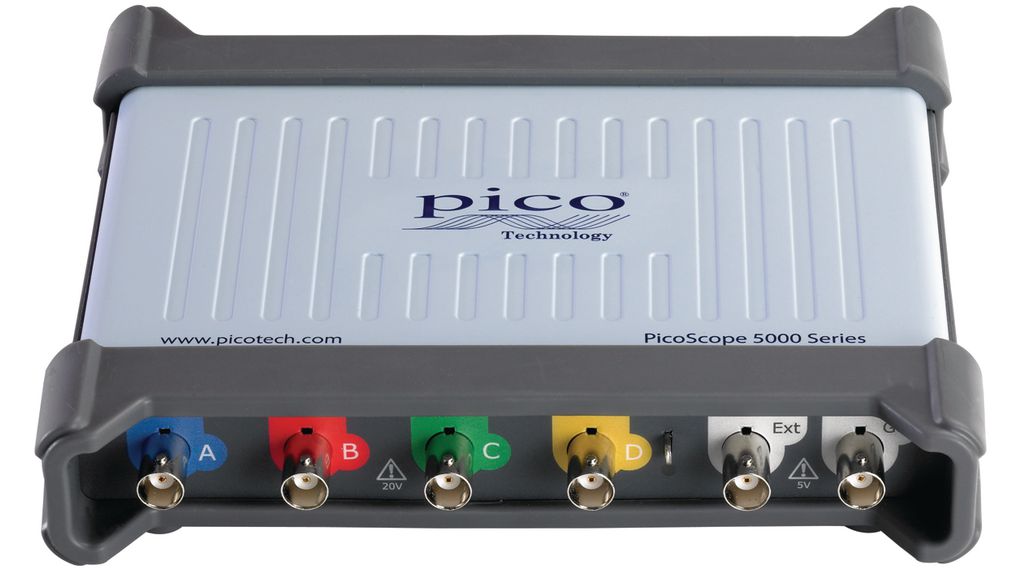
Rohde & Schwarz RTM3K-104M
